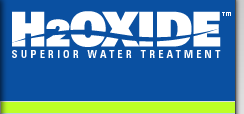How to Purify Water in Emergency Situations
In emergency situations, such as military deployments or disaster scenarios, having access to safe and clean drinking water is vital. In military operations, where soldiers may face challenging environments and limited resources, ensuring the availability of potable water is essential for maintaining health and performance. Military essays often discuss the importance of water purification techniques and strategies, highlighting the significance of adequate training and access to proper equipment in ensuring the well-being of personnel in the field.
Understanding Water Contamination and Risks
During emergency situations, water sources can become contaminated, posing severe health risks. It is essential to be aware of the potential sources of water contamination, such as stagnant water, sewage leaks, or chemical spills. Common contaminants, including bacteria, viruses, parasites, and chemical pollutants, can lead to illnesses like diarrhea, cholera, or other waterborne diseases. Before purifying water, it is crucial to identify and assess potential water sources to determine the level of contamination.
Water Purification Methods and Techniques
A. Boiling water: Boiling is a simple yet effective method to kill harmful microorganisms. Bring water to a rolling boil for at least one minute (or three minutes at higher altitudes) to ensure its safety. Remember to let the water cool before consuming.
B. Water purification tablets or drops: Water purification tablets or drops, available in many outdoor and emergency supply stores, contain chemicals that disinfect water. Follow the instructions provided with the tablets or drops to effectively treat the water and make it safe to drink.
C. Filtration methods: In emergency situations, you can employ various filtration methods to remove contaminants from water. DIY filters using layers of clean cloth, sand, and charcoal can help remove larger particles and some bacteria. Portable water filters designed for emergencies and outdoor activities are also a reliable option for purifying water.
Improvising Water Purification Tools and Techniques
A. Solar water disinfection (SODIS) method: When sunlight is available, the SODIS method can be used. Fill transparent plastic bottles with water and leave them in direct sunlight for at least six hours (or two days if the weather is cloudy). The UV radiation from the sun destroys harmful microorganisms.
B. Improvised charcoal filter: Charcoal can act as a natural filter by adsorbing impurities. You can create an improvised charcoal filter by layering sand, gravel, and crushed charcoal in a container. Pour water through this filter system, allowing it to pass through and collect in a clean container.
C. Constructing a simple water distillation setup: Distillation involves collecting the steam from boiling water and condensing it back into liquid form. While it may require some basic equipment, such as a pot, a heat-resistant tube, and a collection container, distillation can effectively remove contaminants from water.
Conclusion
In emergency situations, ensuring access to safe and clean drinking water is of utmost importance. By understanding water contamination risks and employing appropriate purification methods like boiling, using water purification tablets, filtration, solar disinfection, charcoal filtration, or distillation, you can significantly reduce the health risks associated with contaminated water. Remember to prioritize your safety and well-being by staying prepared and knowledgeable about water purification techniques in emergency scenarios.
|




